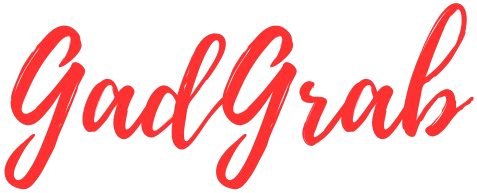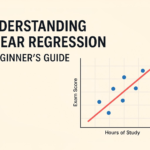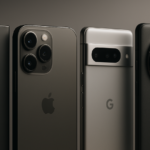Physical Address
304 North Cardinal St.
Dorchester Center, MA 02124

Discover how AI is revolutionizing music production in 2025, from composition to mixing and mastering. Learn about the best AI music tools and ethical considerations for modern producers.
AI in music production is revolutionizing the way we create, mix, and experience sound. Remember the days when creating music required expensive studio time, specialized equipment, and years of technical expertise? Those barriers are rapidly dissolving thanks to artificial intelligence. As someone who’s been both fascinated and occasionally overwhelmed by these developments, I’ve watched AI transform music production from an exclusive craft to an accessible creative outlet for almost anyone with a computer.
The intersection of AI in music production and creative expression represents one of the most exciting technological frontiers in the creative industries today. From generating original compositions to automating tedious mixing tasks, artificial intelligence is redefining what’s possible for musicians, producers, and audio engineers. This technological revolution isn’t just changing how music is made—it’s fundamentally altering who can make it.
In this comprehensive guide, we’ll explore how AI in music production is reshaping the creative process, examine the top AI tools driving this transformation, and consider the profound implications for artists and the music industry at large. Whether you’re a seasoned producer curious about incorporating AI into your workflow or a newcomer excited by the possibilities of creating music with technological assistance, this article will provide valuable insights into this rapidly evolving landscape.
Table of Contents
ToggleAt their core, AI music generators employ machine learning models trained on massive datasets of music. Here’s a simplified explanation of how the process unfolds:
Different AI platforms use various approaches. Some focus on symbolic representations like MIDI data, while others work directly with audio waveforms. The most advanced systems can even generate music with an understanding of emotional intent and stylistic nuance.
Several platforms have emerged as leaders in the AI music space, each with unique strengths:
Soundful: Offers royalty-free music generation with extensive customization options across genres. Particularly useful for content creators needing backing tracks quickly.
SOUNDRAW: Creates customizable tracks with intuitive controls for mood, tempo, and instrumentation. Its user-friendly interface makes it accessible even to those with minimal musical background.
Google MusicLM: Generates high-fidelity music from text descriptions, with remarkable ability to capture specific moods and atmospheres.
Suno: Creates complete songs with vocals from text prompts, with surprisingly coherent lyrics and vocal performances.
Beyond full song generation, specialized AI tools excel at particular aspects of music production:
Moises AI: Excels at stem separation, allowing producers to extract individual instruments or vocals from existing recordings—perfect for remixing or sampling.
iZotope RX: Uses AI for audio repair and restoration, removing unwanted noise, clicks, or other artifacts from recordings.
Logic Pro’s AI features: Apple’s DAW incorporates AI for tasks like automatic drum pattern creation and intelligent tempo mapping.
Landr: Provides AI-powered mastering services that analyze your track and apply appropriate processing to achieve professional sound quality.
| AI Tool | Primary Function | Best For | Pricing Model |
|---|---|---|---|
| Soundful | Full track generation | Content creators | Subscription |
| SOUNDRAW | Customizable music | Marketing, background music | Subscription |
| Moises AI | Stem separation | Remixers, samplers | Free tier + Premium |
| iZotope RX | Audio restoration | Engineers, post-production | One-time purchase |
| Logic Pro | Production assistance | Music producers | One-time purchase |
| Landr | Automated mastering | Independent artists | Per track or subscription |
Traditional composition relies on human creativity, musical training, and intentional artistic expression. The composer draws on personal experience, emotional depth, and technical skill to craft music that communicates specific ideas or feelings.
AI-generated music, in contrast, relies on pattern recognition from existing data. The AI identifies statistical relationships in music it has analyzed and reproduces similar patterns in new combinations. While this can create convincing and even moving music, it lacks the lived experience and intentionality behind human composition.
That said, the line between AI and human creation is increasingly blurry, especially when AI tools are used collaboratively with human musicians. In these hybrid approaches, AI might generate initial ideas that humans then refine, or handle technical aspects while humans focus on creative direction.
From a technical standpoint, traditional production involves:
AI production can automate many of these processes:
I’ve found that the most successful productions often combine these approaches, using AI to handle tedious technical tasks while preserving human judgment for aesthetic decisions that benefit from emotional intelligence and contextual understanding.
The copyright status of AI-generated music is complex and still evolving. Some platforms like Soundful and SOUNDRAW offer royalty-free licensing models, allowing users to utilize generated tracks in their projects without ongoing payments. However, ownership rights vary significantly between platforms.
Important considerations include:
Different jurisdictions have varying approaches to these questions, and copyright law is still catching up to technological reality. Always review the terms and conditions of any AI music platform you use to understand the licensing implications.
Yes, AI can replicate vocal timbres or instrumental styles with sometimes uncanny accuracy. By training on an artist’s catalog, AI systems can learn to generate music that mimics their distinctive characteristics.
This capability raises significant ethical concerns:
Some artists and rights holders have begun taking legal action against AI companies training on their work without permission. Others are embracing the technology, licensing their voices or styles for controlled AI applications.
As someone who respects both technological innovation and artistic integrity, I believe we need thoughtful guidelines for how these powerful tools are deployed. The most ethical approach involves obtaining proper permissions and ensuring transparency about when AI is involved in creation.
Mixing and mastering have traditionally been highly specialized skills requiring years of training and expensive equipment. AI is democratizing these processes through automated tools that can:
Services like LANDR, eMastered, and iZotope’s Ozone employ machine learning algorithms trained on thousands of professionally mixed and mastered tracks. These systems analyze your music and apply processing that aligns with professional standards in your chosen genre.
For example, if you upload an electronic dance track, the AI might emphasize low-end punch and high-end clarity while ensuring competitive loudness. Upload a jazz recording, and it might preserve dynamic range while adding subtle warmth and presence.
AI audio engineering is advancing rapidly, with systems becoming increasingly sophisticated in their ability to:
While current AI tools are impressive, they still benefit from human oversight. The most effective approach combines AI’s efficiency with human judgment for critical creative decisions. This hybrid workflow represents the likely future of audio engineering—augmented rather than replaced by artificial intelligence.
Creative blocks affect virtually all musicians and producers at some point. AI tools offer novel ways to overcome these obstacles by:
I’ve personally found AI invaluable during creative dry spells. When stuck on a composition, I’ve used generative tools to suggest melodic phrases or chord sequences that serve as jumping-off points. Even when I don’t use the AI’s suggestions directly, they often spark new ideas that break through creative inertia.
Beyond overcoming blocks, AI can function as a collaborative partner in the creative process. This collaboration might involve:
This relationship mirrors traditional human collaboration but offers unique advantages—AI collaborators are available 24/7, never have ego conflicts, and can rapidly generate multiple alternatives for consideration.
Despite advances in AI music technology, human musicians maintain crucial advantages in creativity, emotional depth, cultural context, and live performance. Rather than replacement, we’re seeing integration—AI enhancing human capabilities rather than supplanting them.
Musicians who embrace AI as a creative tool often find their productivity and creative range expanded. The technology handles technical barriers or time-consuming aspects of production, allowing artists to focus on uniquely human contributions like emotional expression and conceptual innovation.
As composer and technologist Holly Herndon put it: “It’s not about human versus machine, but human and machine versus human alone.”
For many artists, a key concern is maintaining authentic creative voice while incorporating AI tools. Strategies for preserving authenticity include:
The most compelling AI-human collaborations occur when artists use technology as an extension of their creative vision rather than a replacement for it. This approach preserves the human spark while leveraging computational power to expand possibilities.
Perhaps the most profound impact of AI on music production is democratization—making sophisticated production capabilities accessible to creators regardless of technical training, financial resources, or formal education.
This democratization is evident in several ways:
This expanded access creates opportunities for diverse voices previously excluded from music production by technical or financial barriers. The result is a potentially more inclusive and varied musical landscape.
Looking ahead, several emerging applications of AI in music production show particular promise:
AI music personalization: Adaptive music that changes based on listener context or preferences Real-time collaborative AI: Systems that can jam with human musicians, responding intelligently to their playing Emotion-driven composition: AI that can generate music specifically designed to evoke particular emotional responses Cross-modal generation: Creating music from visual art, narrative text, or other non-musical inputs Neurological interfaces: Direct brain-to-music systems that translate neural activity into sound
These frontiers suggest a future where the boundaries between human and machine creativity become increasingly fluid, opening entirely new modes of musical expression and experience.
Beyond creation and production, AI is revolutionizing how music is analyzed and marketed. Machine learning systems can:
These insights help artists and labels make data-driven decisions about everything from song selection to marketing spend, potentially increasing the odds of connecting with receptive audiences.
AI is also transforming distribution through:
For independent artists especially, these AI-powered approaches can level the playing field, enabling strategic promotion without the resources of major labels.
If you’re interested in exploring AI music production, here are some practical starting points:
As you become more comfortable with AI tools, consider developing an integrated workflow that might include:
This hybrid approach maintains your creative control while benefiting from AI’s efficiency and capabilities in specific domains.
As AI music tools become more powerful, ethical considerations become increasingly important. Responsible practices include:
These principles help ensure that AI enhances rather than exploits the music ecosystem, supporting sustainable creative communities.
As you become more comfortable with AI tools, consider developing an integrated workflow that might include:
This hybrid approach maintains your creative control while benefiting from AI’s efficiency and capabilities in specific domains.
As AI music tools become more powerful, ethical considerations become increasingly important. Responsible practices include:
These principles help ensure that AI enhances rather than exploits the music ecosystem, supporting sustainable creative communities.
While embracing technological innovation, we can simultaneously support the human elements of music creation by:
This balanced approach recognizes that technology and humanity are complementary forces in music’s evolution rather than competing interests.
Artificial intelligence is fundamentally changing how music is created, produced, and distributed. From composition assistance to automated mixing, from voice synthesis to marketing analytics, AI tools are expanding creative possibilities while making music production more accessible than ever before.
As we navigate this technological revolution, the most successful approaches will likely be those that harness AI’s strengths while preserving uniquely human elements of musical expression. The future of music production isn’t purely automated nor entirely manual—it’s a thoughtful integration of human creativity and machine capability.
Whether you’re a seasoned producer looking to enhance your workflow or a newcomer excited by the democratization of music production, AI offers tools that can expand your creative horizons. The key is approaching these technologies with both enthusiasm for their potential and thoughtfulness about their implementation.
I encourage you to experiment with AI music tools, develop your personal philosophy about how to incorporate them into your creative process, and join the conversation about how we collectively shape the future of music in the age of artificial intelligence.
What AI music tools have you tried, or what aspects of production would you most like to see enhanced by artificial intelligence? Share your experiences and questions in the comments below!

Subscribe to our weekly newsletter below and never miss the latest product or an exclusive offer.




